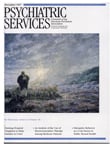Cost-Effectiveness of Television, Radio, and Print Media Programs for Public Mental Health Education
Abstract
Mass media campaigns to influence public attitudes and behaviors in the area of mental health must consider cost-effectiveness, which is based on actual costs, the number of people reached (exposures), and the impact of the program on the individual. Cost per exposure is a critical factor. The authors review their experience in developing media programs in several broadcast formats and in print. Their experience suggests that an effective television production has a very high per-exposure cost and that radio is a more cost-effective way to present health messages. Radio programs also have the advantage of reaching people in their homes or cars or at work. Brief segments may be particularly cost-effective because they can be can be inserted between programs during prime-time hours. Print media—newspapers, magazines, and newsletters—can be cost-effective if magazine or newspaper space is free, but newsletters can be costly due to fixed postage costs. One advantage of print is that it can be reread, clipped out, copied, and passed on.



